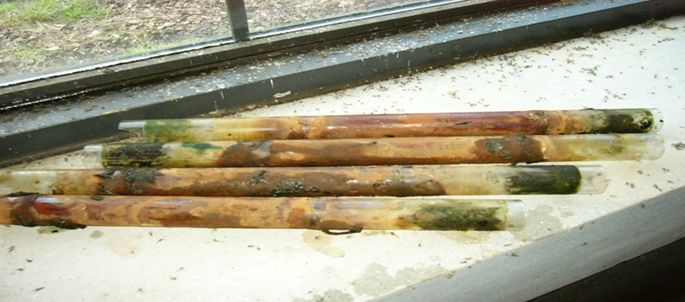Some contaminants can cause a dramatic reduction in UV’s effectiveness when they are present in even small amounts.
Ultraviolet (UV) light is a common water treatment technology that effectively removes microbes from water. However, the effectiveness of UV light can be affected by several factors, including water quality. Although it is generally understood that water quality affects the performance of UV systems, some contaminants, such as iron and manganese, can significantly reduce the effectiveness of UV light even at low concentrations.
Over time, iron and manganese accumulate and adhere to the quartz sleeve surrounding the UV lamp, resulting in visible staining of the quartz. This staining effect can prevent UV light from penetrating the quartz sleeve, leading to inadequate microbial inactivation. Since iron and manganese are commonly found in well water and groundwater systems, it is critical to know the concentrations of these contaminants in the municipal water supply before applying UV radiation, especially in applications where UV radiation is used as a “firewall” and pre-treatment technologies are not available before the UV system.

As a rule of thumb, concentrations greater than 0.3 ppm of iron or 0.05 ppm of manganese are enough to create concern regarding ensuring reliable UV disinfection. If levels are greater than these recommended limits, facilities can consider a few different options to ensure optimal UV performance:
In conclusion, iron and manganese fouling can significantly reduce the effectiveness of UV systems, even at low concentrations. To ensure optimal UV performance, facilities should know the concentrations of these contaminants in the municipal water supply before implementing UV technology and consider applying pre-treatment technologies or other options, such as using a chemical cleaning system or installing UV equipment later in the process. In addition, installing a UV intensity monitoring system that can detect sleeve fouling problems is crucial to ensure that the system delivers the dosage required for adequate water purification. By taking these steps, facilities can ensure that their UV systems operate as intended and effectively remove microbes from the water.
Share: